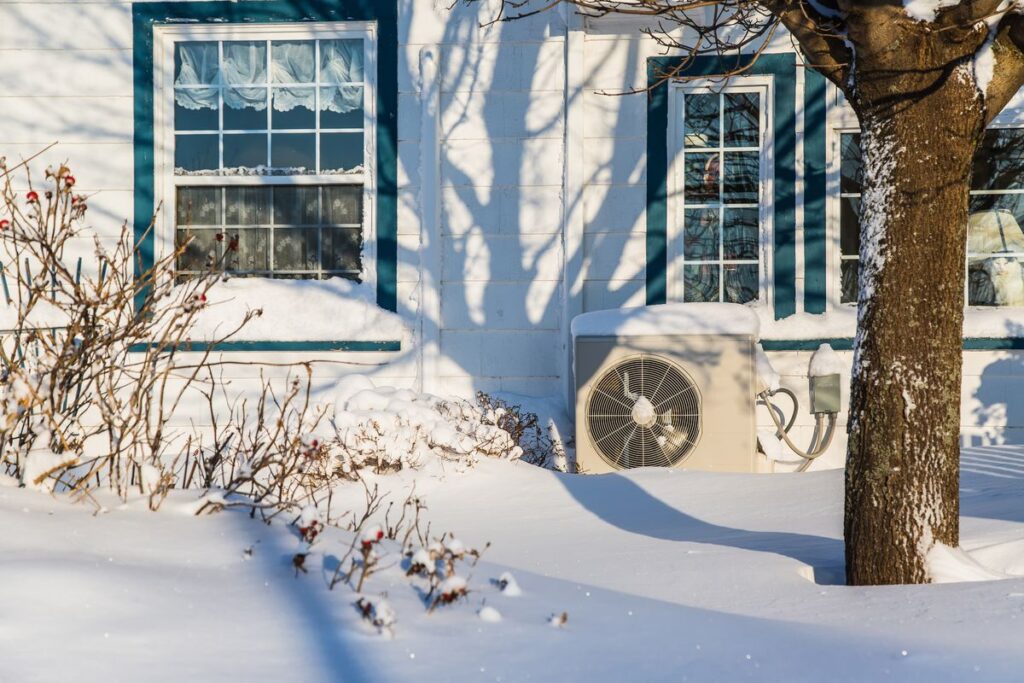Heat pumps in cold climates
Heat pumps are one of the most efficient ways to heat and cool a home. But can a heat pump system work in the winter when the temperature drops below 20 degrees?
Contrary to popular belief, modern cold-climate heat pumps can heat a home efficiently even when the temperature drops below -10 degrees. At this temperature the best cold climate heat pumps are still more energy efficient than furnaces and boilers.
Just ask the millions of homeowners in Scandinavia. People in Norway, Finland and Sweden are installing heat pumps at a faster pace than anywhere else in Europe.
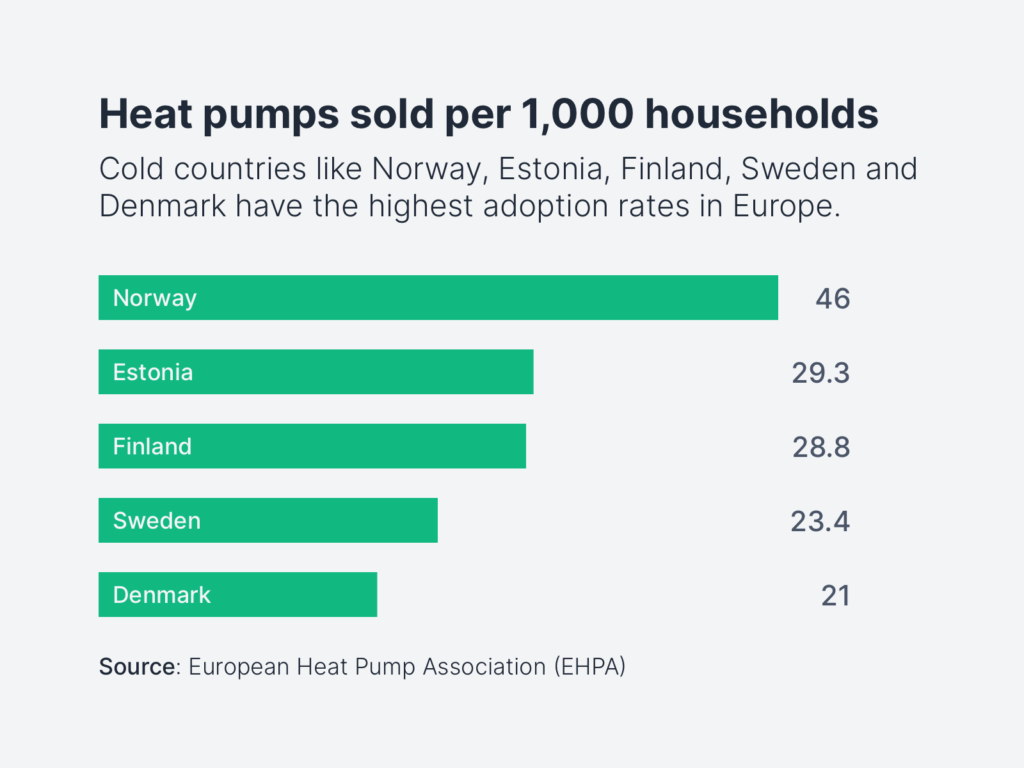
You might be thinking, “Scandinavians do everything better than the rest of the world.” But some states in America are actually adopting heat pumps at an even faster rate than the countries listed in the chart above — even some of the ones with the coldest climates.
Last year, in Maine, there were 50 units sold per 1,000 households, inching it just a little higher than Europe’s leading country, Norway. By comparison 23 units were sold per 1,000 households in the rest of the United States.
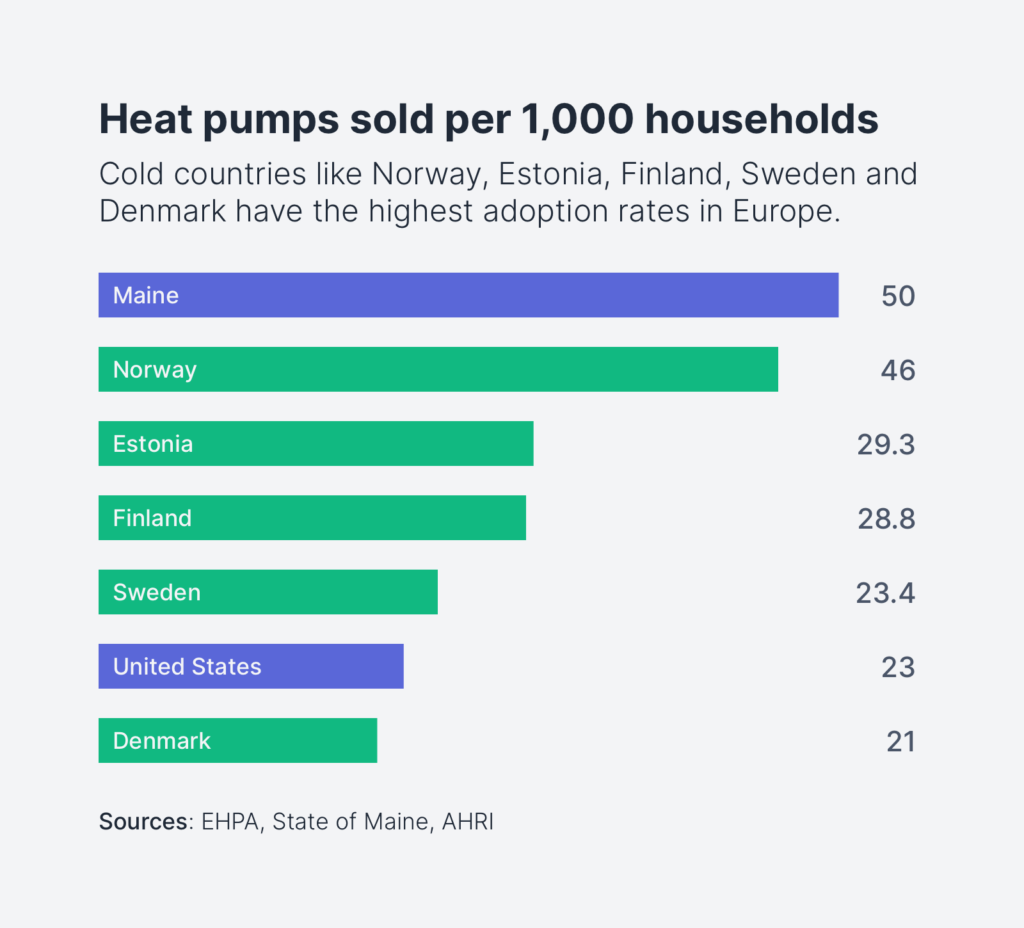
There’s compelling evidence that heat pumps can save most homeowners a lot of money too. I recently used data from NREL’s ResStock model to see how much money the average homeowner can save by switching to a heat pump in various states. I discovered that the average homeowner in Maine — to use my favorite cold climate state as an example again — could save $718 per year.
In New York, a far more populous cold climate state, the average homeowner can save $637 per year. The millions of homeowners using fuel oil in the state could save $976 per year.
I could go on and on. Pennsylvania: $935. Massachusetts: $838. Ohio: $676. You get the point. There are a lot of cold places in this country where heat pumps are simply the best way to heat a home and save money in the process.
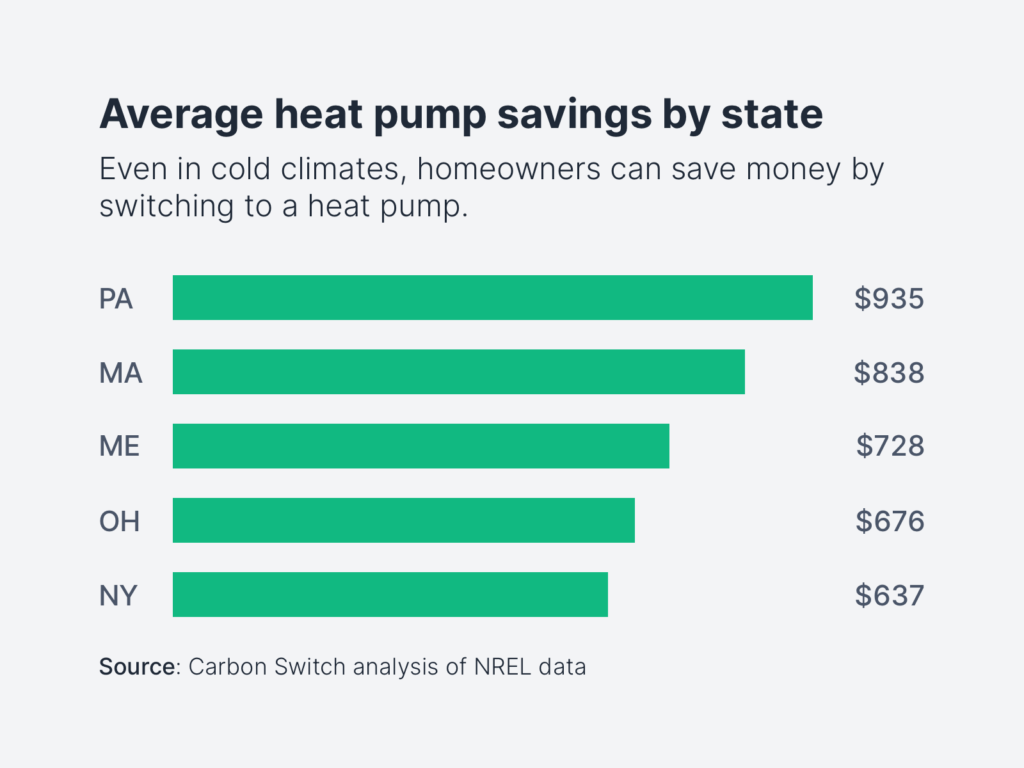
The three myths of cold climate heat pumps
But why are there still so many contractors and homeowners that think heat pumps don’t work in cold climates? My theory is that three myths are to blame:
- The capacity myth, which argues that heat pumps can’t produce enough heat to keep your home comfortable in cold weather.
- The efficiency myth, which argues that heat pumps lose their efficiency advantage when the temperature drops.
- The money myth, which argues that due to their lower efficiency in cold weather, heat pumps cost too much money.
To be clear, these are all myths. But like many falsehoods, their origins stem from seeds of truth. Sometimes the capacity of a heat pump doesn’t meet the load of a home. In some climates and homes it isn’t as cost-effective to use a heat pump.
In the rest of this article I want to debunk each of these myths. But I also want to go beyond the black and white answer and explore why some heat pumps work in cold climates and others don’t.
How do heat pumps work in the winter?
Before beginning our mythbusting adventure, it’s helpful to understand the basics of how heat pumps work on a cold day.
Unlike traditional heating technologies like furnaces or electric baseboards, a heat pump doesn’t burn or use a fuel to generate heat directly. Instead, it uses a little bit of energy to run a compressor that effectively moves heat from one place to another.
While it might not seem like it on the surface, on a cold day there’s actually some heat in the air outside. A heat pump takes some of that heat and moves it into your home.
This basic principle enables a heat pump to take in one unit of energy (in the form of a watt of electricity) and pump out three or four units of heat (usually measured as British Thermal Units, or BTUs). In more technical terms, by using a little bit of energy to run a compressor, a heat pump can achieve a coefficient of performance (COP) of more than one.
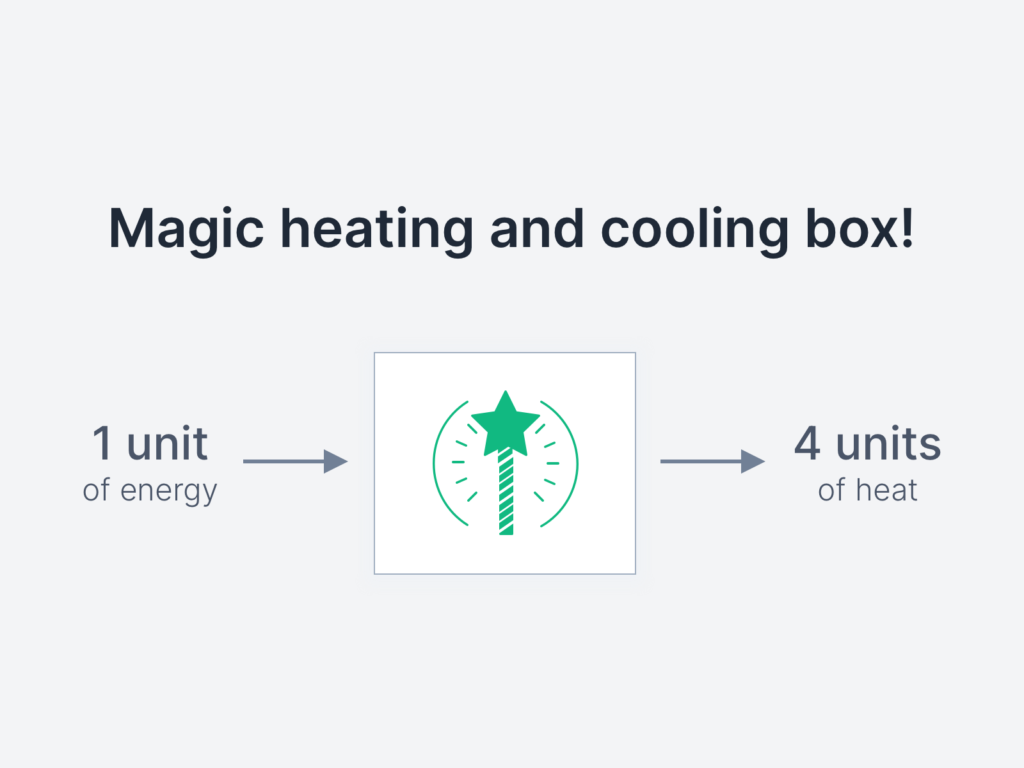
If you’re curious to learn more about the physics of this, I recommend watching this 8 minute video and if you’re really curious, check out this 35 minute video.
For now, the key things to understand are:
- Even on a cold day there’s energy in the air outside
- A heat pump moves that into your home
- The net result is a super-efficient heating system
With all that in mind, let’s start mythbusting.
The capacity myth
The first myth to debunk is “The capacity myth” which is the notion that heat pumps don’t have enough capacity to keep a home warm on a cold day.
Earlier I mentioned two terms: load and capacity. To understand why “The capacity myth” isn’t true, it’s helpful to understand these two concepts.
The heating load of a home is the amount of energy required to keep it at a comfortable temperature. As the temperature changes, the load changes. On a nice 70 degree day the load is basically zero. On a freezing cold day it’s much higher; your heating simply needs to work harder to keep your home comfortable.
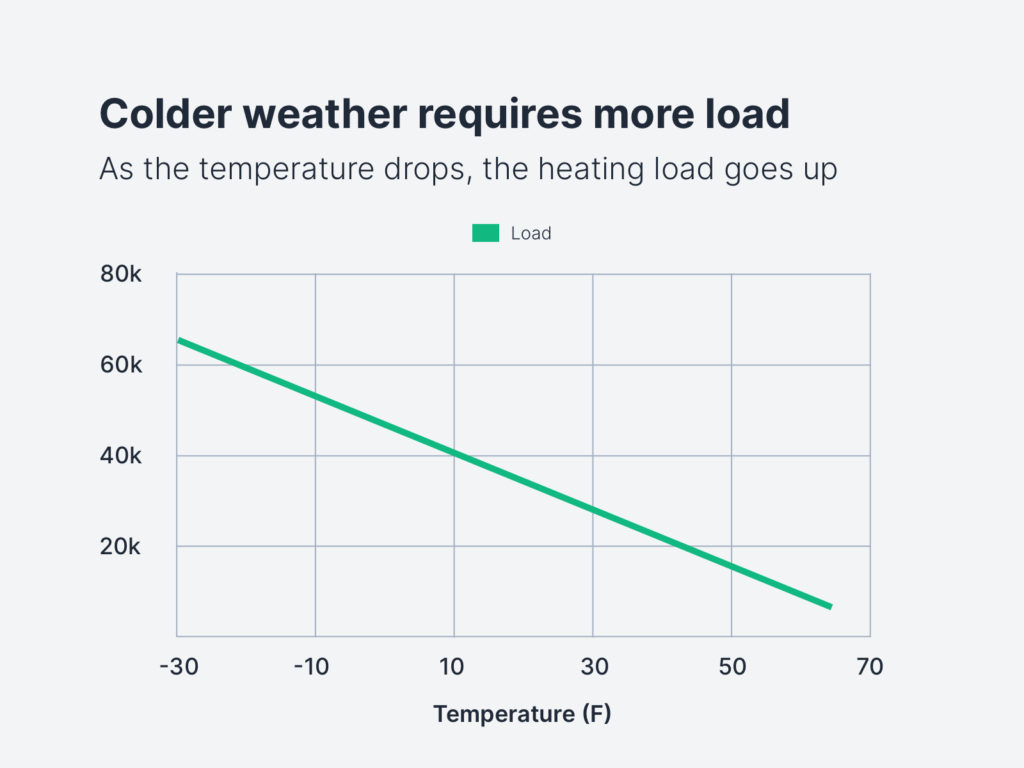
The load also depends on unique characteristics of the home like the amount of insulation or the type of windows and doors. A home built in 1850 with no insulation requires more energy than a brand new home. The load is just a technical way to describe and measure all of this.
The capacity is the amount of heat — or, in the case of air conditioning, cold — that a HVAC system can supply. If load is the leak at the bottom of your bucket, capacity is the faucet bringing in more water.
Heat pumps are unique compared to every other HVAC system in that they don’t have a single fixed capacity. Whereas a furnace might have a fixed capacity of 100,000 BTUs every day of the year, no matter the weather, a heat pump’s capacity could range from 40,000 to 60,000, for example.
If you think about it for a second, this makes sense. Earlier I mentioned that heat pumps effectively capture warmth from the air outside and bring it into a home. The lower the temperature drops, the less energy there is to move. Hence, the capacity goes down.
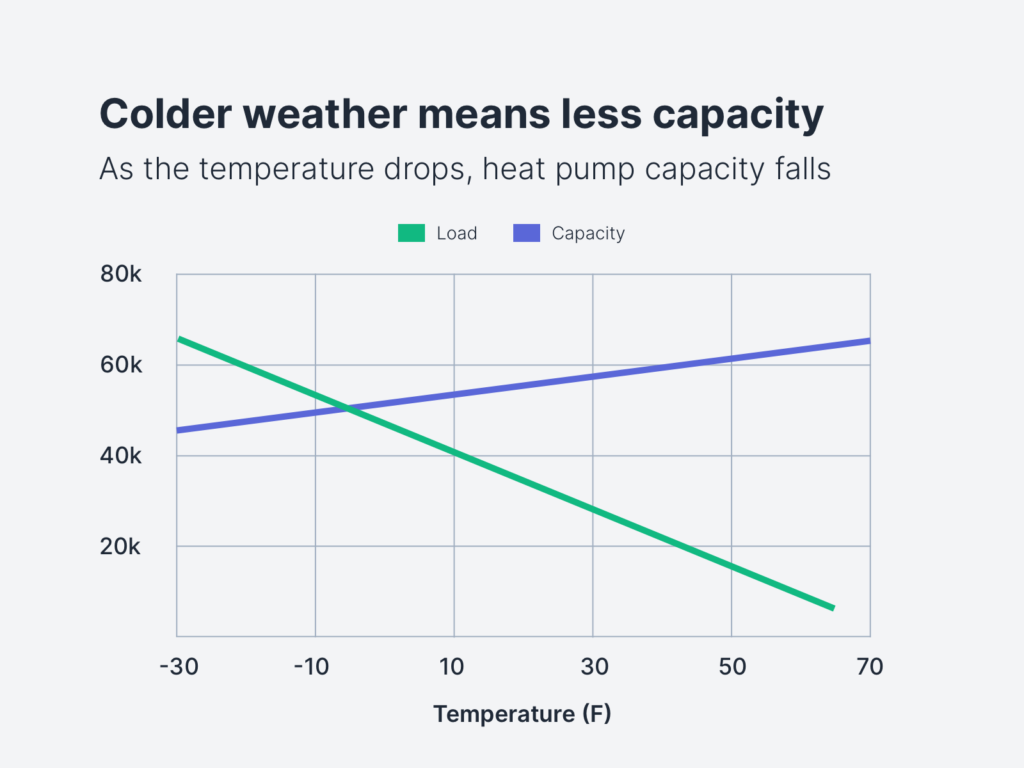
As long as the capacity doesn’t drop below the load, the heating will work just fine. But if a contractor undersizes a system, then there’s a good chance that on a really cold day it’ll get uncomfortably chilly in the house. In the example above that’d be about -7 degrees.
At that point, your home doesn’t immediately become an ice-box. No, that’s when backup heating strips kick on and your heat pump basically turns into a space heater. Using electric resistance heat like this isn’t efficient, but given that backup heat is generally used less than 1% of the hours in a year, it doesn’t impact operating costs very much.
In home energy, nothing is black and white. A low-capacity heat pump in a leaky home won’t work. Even a good heat pump isn’t sufficient to provide all your heating if you live somewhere that regularly gets colder than -22 F, which is when the best cold-climate heat pumps start to tap out.
But for the vast majority of people in America, heat pumps can supply 100% of the capacity necessary to keep their home comfortable all year round. Most complaints about heat pumps not working in cold weather are the result of user error — often by the installer — not the underlying technology.
The efficiency myth
Earlier I mentioned that the magic of a heat pump is that it converts one unit of energy into three or four units of heat. But this ratio – referred to as the coefficient of performance (COP) – isn’t a fixed number all the time.
The colder it is outside, the harder it is for a heat pump to effectively find any heat in the air and move it into your home. Hence, the lower the temperature, the lower the COP.
But a common misconception – we’ll call it “The efficiency myth” – is that at 30 or 40 degrees, the COP drops below one. If that were true then it would take one unit of energy to create 0.8 units of heat, for example. At that point it would make more sense to run a resistance heater or natural gas furnace since these systems convert anywhere from 80-100% of energy into heat.
However, that’s not the case. Compared to the heat pumps of yesteryear, today’s cold-climate heat pumps can achieve COPs of more than one even at very cold temperatures. At 30 or 40 degrees, many of them achieve COPs ranging from two to three.
Take a look at the chart below that shows the COP of a Mitsubishi cold-climate heat pump during a series of tests in Alaska. As you can see the COP generally remains above one until about -10 degrees fahrenheit.
In other words, until the temperature reaches -10 degrees fahrenheit, this heat pump would perform more efficiently than any other piece of equipment. And how many hours a year is it really colder than -10 degrees fahrenheit where you live?
The takeaway: Today’s heat pumps are the most energy efficient way to heat a home even in extremely cold weather.
The money myth
Most people don’t care about BTUs and COPs. They want to know how much something will cost them in dollars.
This is where the comparative analysis of all this stuff gets a little tricky. In America, energy prices vary widely depending on where you live. In Connecticut, electricity costs a little more than $0.20 per kWh. Those same electrons cost $0.10 per kWh in Louisiana.
Natural gas has a similarly large range. In Florida the average price of residential natural gas is about $2. In Idaho it’s $0.65. In addition to that, every climate and home is different. Each one requires a different amount of energy to stay warm in the winter.
To estimate the cost of using different fuels and equipment in every home in America would require a supercomputer crunching millions of data points. Fortunately those exist.
In 2017, the National Renewable Energy Laboratory (NREL) set out to find the best energy efficiency opportunities in every single-family home in America. After spending about a year gathering data, they plugged it into an algorithm. It took one of the most powerful computers in the country about 9 months to get through all the calculations.
This herculean effort enabled researchers to see how much the average homeowner could save every year by switching from inefficient heating equipment to more efficient alternatives. So what’d they find?
For the vast majority of people across the country, heat pumps are the most cost effective way to heat their home.
Most relevant in this context, heat pumps can save people hundreds or thousands of dollars per year even in cold climates, debunking the myth that it’s too expensive to use a heat pump in a cold climate.
Again, here’s how much the average homeowner could save in a few cold climate states:

The only places where people won’t save by switching to a heat pump are those where:
- They’re switching from a gas furnace
- And gas is much cheaper than electricity.
But if you spend a lot of money heating your home every year, the odds are pretty good that a heat pump is going to save you money whether you live in Florida or Maine. If you currently heat your home with a standard electric unit, fuel oil or propane, there’s almost no doubt that you can save money.
Over time, we can expect these savings to grow. Many energy analysts expect natural gas prices to go up and electricity prices to go down as governments begin pricing carbon pollution and utilities build massive amounts of cheap renewable electricity. Meanwhile, heat pumps keep getting more efficient, compared to alternatives like gas furnaces and electric resistance systems, which have already reached their theoretical maximum efficiency.
Which is all to say that today heat pumps definitely work in cold climates. But in the future they’ll work even better.
Frequently asked questions
Do heat pumps work below 20 degrees?
Yes, modern cold-climate heat pumps can heat a home efficiently even when the temperature drops below -10 degrees. At this temperature the best cold climate heat pumps are still more energy efficient than furnaces and boilers.
What temperature is a heat pump not effective?
The best cold-climate heat pumps work effectively down to about -10 degrees. Many cold climate heat pumps have backup heating elements that turns on below this temperature in order to keep your home warm.
